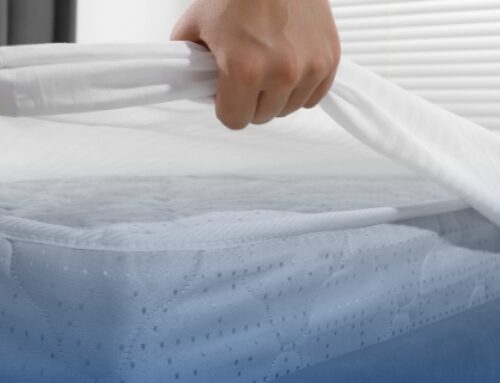
The Saudi Sleep Rhythm: What’s Different?
1) Late evenings are common
Family time, social gatherings, and shopping often run late. That can push bedtimes past midnight, shrinking total sleep—especially on workdays. Experts suggest aiming for consistent sleep and wake times even if you’re a night owl, with at least 7 hours of sleep most nights.
2) AC and dry air
Air conditioning is essential, but the dry environment can cause dry throat, nasal congestion, or snoring. A humidifier (or a bowl of water near the AC stream), plus adequate hydration, counters dryness so sleep stays deeper.
3) Caffeine culture
Arabic coffee (qahwa), tea, and energy drinks are woven into hospitality. Caffeine after late afternoon can delay melatonin release; most experts recommend stopping caffeine 6–8 hours before bed.
4) Ramadan & seasonal shifts
During Ramadan, sleep and meal timing shift. Power naps and a stable post-Isha wind-down routine help maintain alertness the next day. After Ramadan, gradually resetting bedtime by 15–20 minutes each night eases the transition.
The Most Common Sleep Disruptors (and Simple Fixes)
- Screens before bed: Blue-light exposure from phones delays sleepiness. Use “Night Shift”/blue-light filters and set a “no-scroll” time 60 minutes before bed.
- Irregular sleep schedule: Weekend sleep-ins over 90 minutes can cause “social jet lag.” Try to keep wake-up time within an hour of your weekday schedule.
- Heavy dinners late at night: Opt for lighter, earlier meals; leave 2–3 hours between dinner and bedtime.
- Uncomfortable mattress & pillow: A sagging or mismatched mattress strains your back and neck. Your bed should support your spine’s natural S-curve and minimize pressure points.
- Hot bedroom: Cool rooms (around 18–22°C) support faster sleep onset. Use breathable bedding and moisture-wicking mattress protectors.
Expert-Backed Evening Routine (30 Minutes That Change Your Sleep)
- 15 minutes – Unwind & dim: lower lights, slow your breathing, and sip warm (non-caffeinated) tea.
- 10 minutes – Gentle mobility: neck rolls, shoulder circles, 1–2 easy stretches for hips/hamstrings.
- 5 minutes – Mind dump: jot tomorrow’s to-dos so worries don’t follow you into bed.
- Phone outside the bedroom: charge it away from the bed; use an analog alarm if needed.
Mattress Matters: How to Choose What Your Body Actually Needs
Step 1: Your primary sleep position
- Side sleepers: need pressure relief at shoulders/hips and neutral spinal alignment.
- Back sleepers: need balanced support to keep the lower back from sagging.
- Stomach sleepers: need a slightly firmer feel to prevent back hyperextension.
Step 2: Firmness & materials
- Medium to medium-firm suits most back and combination sleepers.
- Plush to medium suits side sleepers who need extra pressure relief.
- Breathability: cooling covers and open-cell foams help in warm climates.
- Edge support: matters if you sit on the side of the bed often.
Step 3: Bundle smart for comfort + hygiene
High-quality bundles make it easier to get the whole sleep system right (mattress, pillows, protectors, sheets) in one go—with coordinated comfort and value.
- Looking for a complete, premium setup? Explore Royal Box 15—a curated 15-piece bundle designed to cover your full sleep environment, from core comfort layers to finishing touches.
- 👉 Royal Box 15
- Want a streamlined, great-value option? Consider Royal Box 13 for an essentials-first configuration that still elevates support, hygiene, and airflow.
- 👉 Royal Box 13
You can also learn more about the brand and product range here: www.legendslpeesa.com
Pairing Mattress + Pillow Like a Pro
- Side sleepers: Medium mattress + higher-profile pillow to fill the shoulder-to-neck gap.
- Back sleepers: Medium-firm mattress + mid-profile pillow that supports the natural neck curve.
- Stomach sleepers: Firmer mattress + low-profile pillow (or no pillow under head; small pillow under hips).
Pro tip: If you wake up with neck or shoulder tightness, your pillow height is likely off by 1–2 cm.
Daytime Habits That Pay Off at Night
- Morning light: 10–20 minutes of outdoor light within an hour of waking anchors your body clock.
- Exercise timing: aim for vigorous workouts earlier in the day; do calming movement (stretching/walks) after Maghrib.
- Stress valves: micro-breaks, short prayers, or breathing drills reduce evening cortisol.
- Hydration plan: front-load water earlier; taper after Maghrib to reduce bathroom trips at night.
Special Notes for Parents & Students
- Students: Study blocks earlier, review light at night, and no caffeine after Asr.
- Kids: Consistent bedtime routines (bath, story, dua) train reliable sleep across the school week—even with busy family schedules.
Quick Checklist: “Is My Sleep On Track?”
- I get 7–9 hours most nights.
- My bedtime and wake time are consistent (±60 minutes).
- My bedroom is cool, dark, and quiet.
- No screens in the last 60 minutes.
- My mattress and pillow match my body and position.
- I feel alert before Dhuhr without relying on energy drinks.
If you checked fewer than four boxes, start with the evening routine and temperature control—and consider upgrading your bed setup with a thoughtfully bundled system like Royal Box 15 or Royal Box 13
FAQs
Q: Is it okay to nap after Dhuhr?
A: A short 20–30 minute nap can boost focus. Avoid long naps after Asr, which may delay bedtime.
Q: I snore with AC—what helps?
A: Add humidity, stay hydrated, and elevate your head slightly. Persistent snoring or pauses in breathing? See a sleep specialist to rule out sleep apnea.
Q: How often should I replace a mattress?
A: Typically 7–10 years, sooner if you notice dips, new aches, or better sleep elsewhere.
Sleep in Saudi Arabia has its own rhythm—and you can absolutely make it work for you. Align your routine with your lifestyle, master the bedroom environment, and build a bed setup that truly supports you. When you’re ready to upgrade your sleep system, explore Royal Box 15
or Royal Box 13, and learn more about options at www.legendslpeesa.com.Sleep better tonight—live stronger tomorrow.





